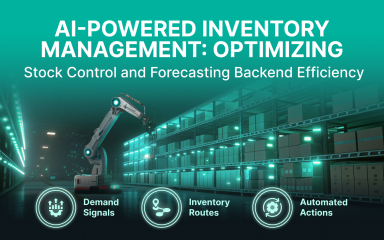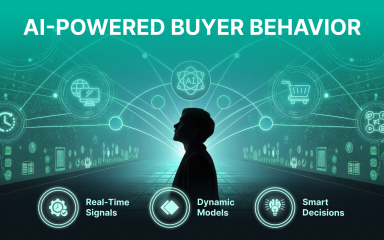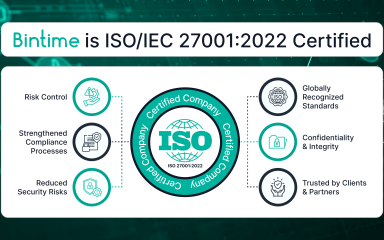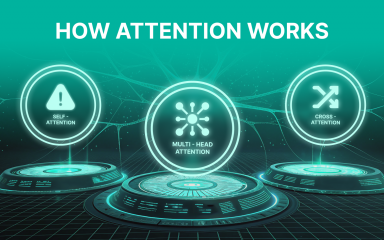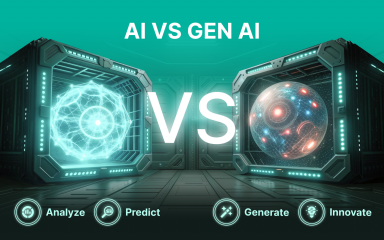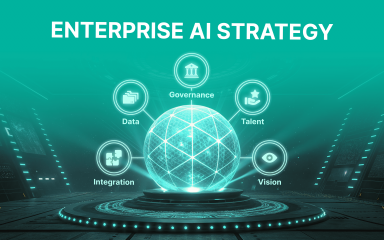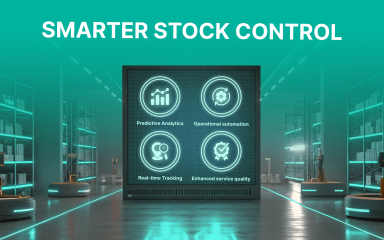How to benefit from AI business process automation
If your team is still drowning in spreadsheets, chasing email approvals, or manually updating product listings, you’re not alone. Most business operations are riddled with repetitive tasks that eat up time and drain energy. Business automation offers a solution by increasing efficiency, supporting decision-making, and helping organizations optimize their workflows.
This isn’t about replacing people. It’s about removing friction — using AI-powered automation to streamline workflows, streamlining processes, reduce errors, and make smarter decisions at every step of the process. AI and automation are transforming workforce productivity and operational efficiency by reducing mundane tasks and enabling employees to focus on higher-value activities. Whether you’re in eCommerce, logistics, finance, or operations, integrating AI for business process automation can help you scale efficiently and finally give your team room to focus on work that matters.
What Is the Role of AI in Business Process Automation?
At its core, business process automation AI is about making work faster, cleaner, and smarter.
Traditional automation relies on setting up rule-based systems: “If X happens, do Y.” While traditional automation works well for predictable, repetitive tasks — like invoice matching or basic email responses — it is limited in handling variability and complexity. The moment you needed context, flexibility, or decision-making? You were back to doing it manually.
That’s where AI in business process automation changes the game.
Unlike old-school automation, Artificial Intelligence can handle messy, unstructured inputs. It understands natural language, adapts to variations, and even learns from past actions. It doesn’t just follow rules — it improves them over time.
So, what is the role of AI in business process automation?
It’s to take routine workflows and make them intelligent. It powers everything from auto-sorting customer emails by urgency to flagging unusual trends in financial data, without you needing to tell it what “unusual” looks like.
This shift from static to dynamic automation is what makes business process automation with AI such a powerful driver of optimization. Instead of just saving time, AI helps you do things better — with fewer errors, faster turnarounds, and insights you didn’t even know you needed.
In other words, it’s not just about doing the same thing faster. It’s about doing smarter things, too.
By integrating AI for business process automation, you can help your team scale efficiently and finally give them room to focus on work that matters. Businesses can integrate AI into their existing automation systems to boost productivity, overcome the limitations of traditional automation, and support digital transformation.
Key Benefits of AI Powered Business Process Automation
Why are so many companies shifting to AI powered business process automation? Because once you implement it, the improvements aren’t subtle — they’re immediate and measurable. Process automation technologies, when integrated with AI, are driving these measurable improvements in efficiency and scalability.
Here’s what businesses are actually gaining:
1. Efficiency That Doesn’t Sleep
With business process automation using AI, tasks that used to take hours — such as invoice processing, inventory updates, and lead scoring — are now completed in minutes. AI-driven platforms help businesses automate processes by leveraging advanced machine learning to handle unstructured data and streamline workflows, leading to these efficiency gains. AI systems don’t take breaks or make typos. They just get it done, around the clock.
This always-on efficiency gives you the ability to scale operations without adding more headcount.
2. Fewer Errors, Less Rework
One of the most overlooked benefits of AI is how much human error it quietly eliminates. Artificial Intelligence double-checks data inputs, catches inconsistencies, and doesn’t forget steps in a process. Automated processes powered by AI enhance efficiency, improve decision-making, and reduce costs across various business functions. Whether it’s ensuring the accuracy of a customer’s shipping address or validating purchase orders, AI automation and business process optimization go hand in hand.
It’s not just faster — it’s more reliable.
3. Smarter Use of Human Resources
Freeing people from repetitive, brain-numbing tasks is more than a productivity win — it’s a morale boost. AI automation specifically targets manual tasks, improving efficiency and reducing the burden on your team. As a result, there is less need for human intervention in routine business processes. When AI handles the mundane, your team can focus on complex, creative, or strategic work that moves the business forward.
Instead of chasing down missed approvals, employees spend time improving client experience, understanding customer behavior, refining processes, or testing new ideas. This shift enables them to focus on more strategic tasks that drive business growth. That’s where innovation happens.
4. Real-Time Adaptability
Unlike rigid, rule-based workflows, AI powered business process automation adapts. If a shipment is delayed, if a product runs low, or if a customer uses unexpected language in a support ticket, the system can respond intelligently. AI-powered automation can adapt and optimize the entire process, making workflows more efficient and adaptive.
This means fewer bottlenecks, better responsiveness, and workflows that evolve as your business does.
How AI Solutions Transform Business Process Automation
Automation isn’t new, but when you add AI to the mix, it stops being just a time-saver and starts becoming a force multiplier. This next evolution is known as intelligent process automation, which combines AI and automation technologies to handle complex, judgment-based business tasks.
AI solutions for business process automation aren’t just about speed. They’re about clarity, adaptability, and decision-making. And they’re already reshaping how IT teams handle everything from customer service to supply chain ops.
Let’s break down a few real examples.
Smart Document Processing
Every company handles a mountain of paperwork — contracts, invoices, forms, and receipts. Manually reading and sorting this data? Slow, costly, and prone to errors.
AI now uses natural language processing (NLP) to scan, classify, and extract data from both structured and unstructured documents. With AI-powered data analysis, organizations can gain deeper insights from these documents, enabling better decision-making and more efficient business processes. It can auto-tag files, fraud detection, detect missing fields, and even match scanned receipts to payment records.
Result? Faster turnaround times and cleaner data — no more bottlenecks at the scanner.
Intelligent Task Management
AI doesn’t just perform tasks. It can prioritize them too.
Modern AI agents for business process automation monitor workflow queues, identify delays, and automatically assign tasks to the right team members based on their capacity, performance, or skill. They adjust in real time, reducing idle time and boosting overall efficiency.
These systems often sit on top of robotic process automation platforms — giving traditional bots a brain that helps them adapt to context and manage complex tasks. Task automation is further enhanced by integrating AI, RPA, and data analytics, enabling fully automated workflows that improve efficiency and decision-making.
Predictive Data Analytics
Forget reporting on what happened. AI looks ahead.
With enough process data, AI tools identify patterns that humans miss: like which purchase orders will likely be delayed, or when your inventory is at risk of running out. This lets you prevent problems before they become expensive.
In other words, AI agents aren’t just reacting — they’re anticipating.
And that’s the future of AI-driven business process automation solutions: not just faster processes, but smarter, self-optimizing systems built to evolve alongside your business.
That’s why more organizations are turning to AI enabled business process automation as a core strategy. From enterprise resource planning to CRM workflows, these advanced systems offer scalable, flexible, and highly intelligent automation that grows with your business.
To succeed, companies are increasingly relying on advanced business process automation AI tools — and choosing the right AI agent for business process automation can be the key to long-term efficiency and innovation.
 Popular AI Tools for Business Process Automation
Popular AI Tools for Business Process Automation
Let’s get specific. What AI tools for business process automation are companies actually using — and why?
Below are some of the most widely adopted platforms helping businesses ditch the manual grind and embrace AI-powered flow. New AI tools are enabling advanced automation features such as resume screening, personalized training, workforce planning, and seamless integration with legacy systems.
1. UiPath
Originally known for its strength in robotic process automation (RPA), UiPath now combines AI, machine learning, and process mining to handle complex workflows. From finance teams automating reconciliations to HR departments speeding up onboarding, it’s become one of the most powerful business process management tools on the market.
2. Make (formerly Integromat)
Make offers a visual, no-code interface that integrates thousands of apps and services — and now, AI-powered actions. It’s ideal for mid-sized businesses that want to set up smart automations without writing a line of code. Use cases range from automating product data syncs to building dynamic content workflows.
3. Celonis
Focused on process mining, Celonis analyzes your existing workflows to spot inefficiencies. Its AI layer suggests real-time improvements and automatically reroutes processes to eliminate delays. It’s popular among enterprises looking to scale without reinventing the wheel.
4. IBM Watson Orchestrate
This one’s all about AI agents. IBM lets you train digital workers to handle common tasks — like scheduling meetings, responding to emails, or managing project updates — all while integrating with your core tools like Salesforce, Slack, or SAP.
5. Appian
Appian combines low-code automation with built-in AI to help businesses automate and optimize complex, multi-step workflows. It’s frequently used in regulated industries like healthcare and finance, where compliance and agility need to go hand-in-hand.
These platforms — and the AI business process automation companies behind them — are reshaping what’s possible for businesses of all sizes. They’re not just offering automation. They’re offering strategy-backed solutions that evolve with your operations.
Real-World AI Business Process Automation Examples
Sometimes the best way to understand the value of AI is to see it in action. These aren’t theoretical concepts — these are AI business process automation examples from companies using intelligent tools to reduce friction and drive real results. These examples highlight how business automation is transforming efficiency and supporting better decision-making across industries.
Retail: Automating Product Updates Across Channels
A mid-sized eCommerce brand selling across Amazon, Shopify, and Walmart was struggling to keep product listings consistent and up to date. Prices changed daily. Inventory fluctuated by the hour. Manually updating every channel? A nightmare.
They implemented an AI-driven business process automation solution that handled everything: pulling inventory data from their warehouse system, updating product availability online, syncing pricing in real-time, all with minimal human input.
The result? 50% fewer listing errors, faster product launches, and a measurable increase in customer satisfaction due to accurate information.
Finance: Streamlining Invoice and Expense Processing
A European fintech company used to dedicate two full-time staff just to sort and approve invoices — a classic manual task ripe for automation.
With the help of an AI process automation system, scanned invoices were instantly read using OCR and NLP, matched to purchase orders, and routed for approval based on value and vendor category.
The company cut processing time by 70%, eliminated most clerical errors, and gained full audit visibility, without needing to expand their finance team.
Customer Service: Smarter Ticket Triage
One logistics company had a growing issue: their customer support inbox received over 10,000 messages per month. AI automation was implemented to efficiently handle customer inquiries, allowing support teams to focus on more complex issues. Agents were overwhelmed, and customers waited days for replies.
They deployed AI agents for business process automation that used sentiment analysis and keyword recognition to sort incoming messages by urgency and intent. Refund requests? Routed to finance. Shipping delays? Escalated to operations.
Within weeks, response times dropped by 60% and first-touch resolution rates jumped.
These aren’t isolated wins. They show how AI process automation in business isn’t about replacing people — it’s about freeing them up to do more meaningful, high-impact work.
Best Practices for Implementing AI-Enabled Business Process Automation
You don’t need to overhaul your entire tech stack overnight to benefit from AI-enabled business process automation. But you do need a smart, phased approach — one that balances automation technologies, people, and goals.
Here’s how to set yourself up for success:
1. Start with Process Analysis
Before bringing in AI, understand what you’re working with. Map out your current workflows — where do delays happen? What’s still done manually? Where do errors creep in?
This analysis will help you identify quick wins: the low-risk, high-impact routine tasks that are perfect candidates for automation.
Hint: If a task is repetitive, rule-based, and high-volume, it’s probably a good fit for business process automation with AI.
2. Choose Tools That Play Well with Others
Artificial Intelligence works best when it doesn’t have to fight your existing systems. Look for AI process automation tools that integrate easily with your CRM, ERP, or eCommerce platforms. Avoid solutions that require heavy custom development unless you have the in-house skills to support it.
Some questions to ask:
- Does the platform offer prebuilt connectors for my tools?
- Can it handle both structured and unstructured data?
- Is the vendor known for responsive support and documentation?
3. Get Your Team on Board Early
Automation can spark resistance if it feels like a threat. Involve your team from the beginning — show them how Artificial Intelligence will support their work, not replace it. Identify champions inside departments who can test tools and advocate for adoption.
Also: invest in training. Even intuitive systems need onboarding to avoid confusion and downtime.
4. Start Small, Scale Smart
Pilot projects are your best friend. Pick one process (like purchase order approvals or employee onboarding) and automate it end-to-end. Measure the results, iron out any bugs, and use the success to make a case for expanding automation across more workflows.
Think of it like building muscle — you start light, get the form right, then add more weight.
Challenges and Future Trends in AI Business Process Automation
Let’s be real — while AI business process automation offers a ton of upside, it’s not a magic switch. Like any transformative tech, it comes with a few bumps in the road.
And they’re already reshaping how IT teams handle everything from customer service to supply chain ops. AI is also playing a crucial role in optimizing supply chain management, including demand forecasting, inventory control, and logistics, to boost efficiency and reduce costs.
The Hurdles to Watch
1. Data Quality and Availability
Artificial Intelligence thrives on historical data. If your business data is siloed, outdated, or incomplete, the system won’t have much to work with. And garbage in still means garbage out — even with the smartest tools.
2. Integration with Legacy Systems
Many companies still rely on legacy software that wasn’t built with AI in mind. Connecting new business process automation platforms to these older tools can require extra work, or clever middleware.
3. Security and Ethics
The more processes you automate with AI, the more sensitive customer data you expose to algorithms. That means you need strong guardrails: encryption, role-based access, audit trails. And then there’s the ethical side — how decisions are made, who’s accountable, and how to spot bias in AI models.
4. Internal Resistance
Sometimes, the challenge isn’t tech — it’s people. Employees might fear being replaced. Leaders might worry about losing control. Managing this change with transparency and inclusion is just as important as the tech itself.
Where It’s All Headed
Despite the hurdles, the direction is clear: automation is only getting smarter — and more human-friendly.
Here’s what’s coming:
- Generative AI will move beyond content creation to help generate product descriptions, summarize long reports, and even draft customer responses in real time.
- Cognitive automation will blend natural language processing, computer vision, and learning algorithms to manage more complex tasks that used to require a human touch.
- AI agents will move from simple bots to collaborative coworkers, capable of managing entire workflows, handing off only what needs judgment or empathy.
And as businesses continue to demand agility and scale, AI business process automation will shift from a nice-to-have to a core operational layer, as essential as email or CRM.
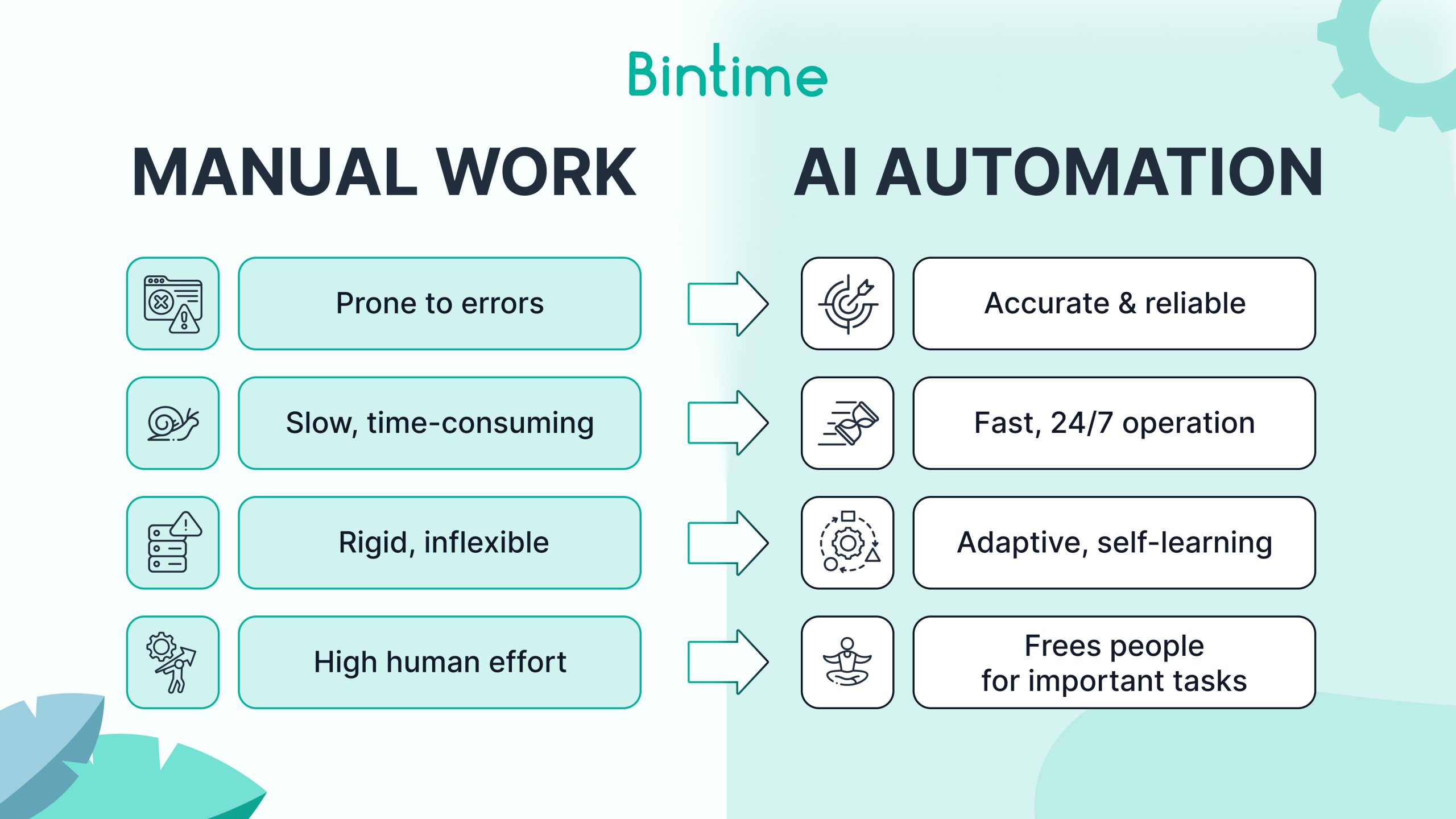 Popular
Popular 

